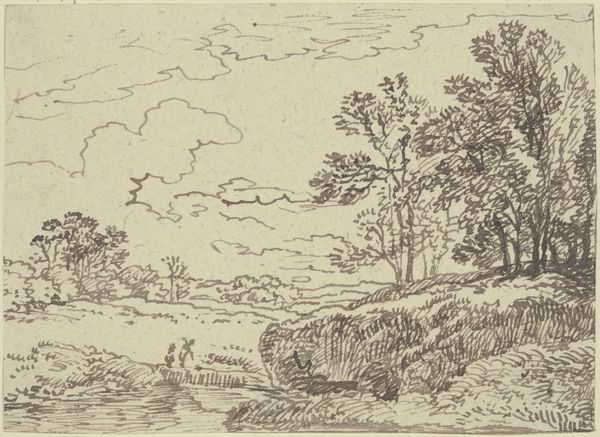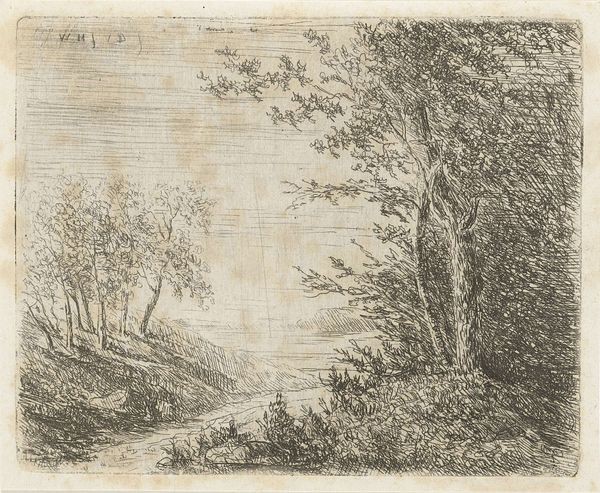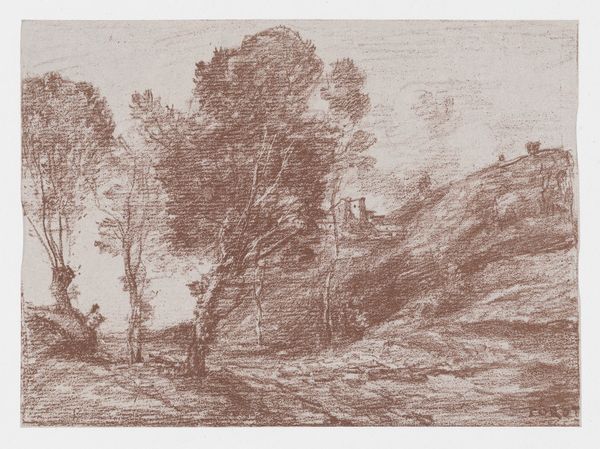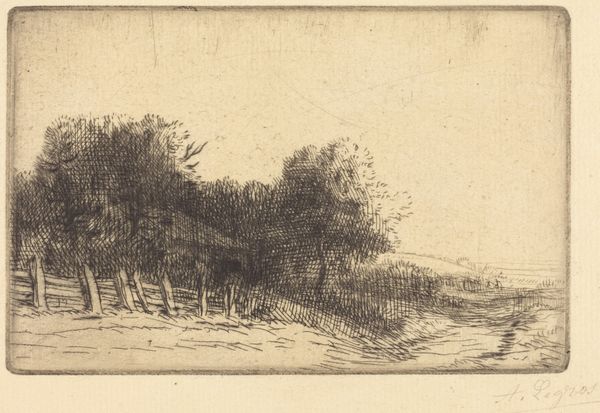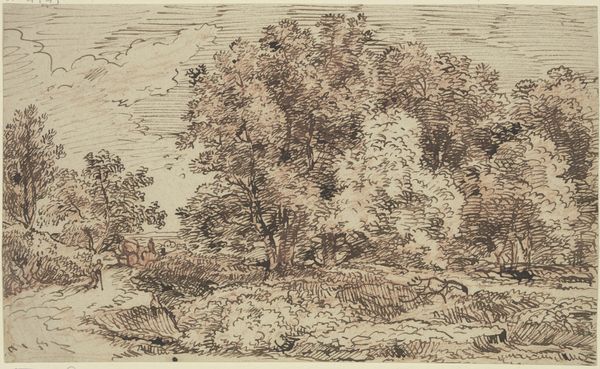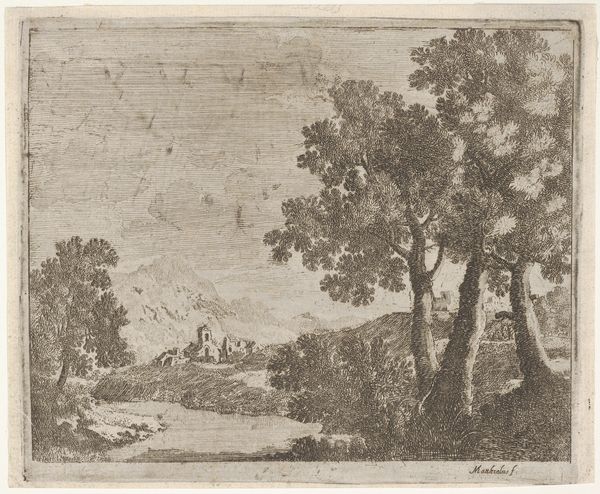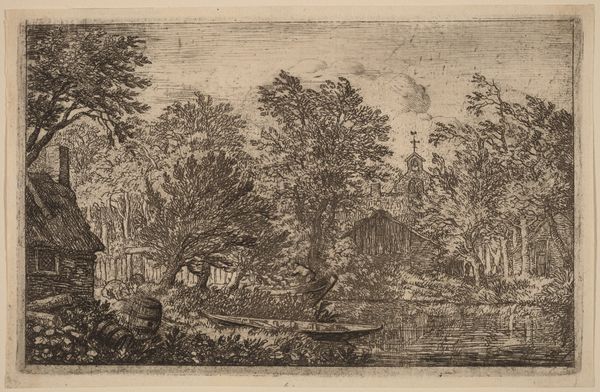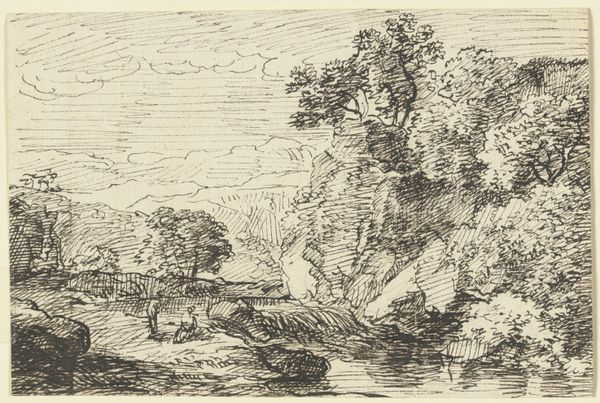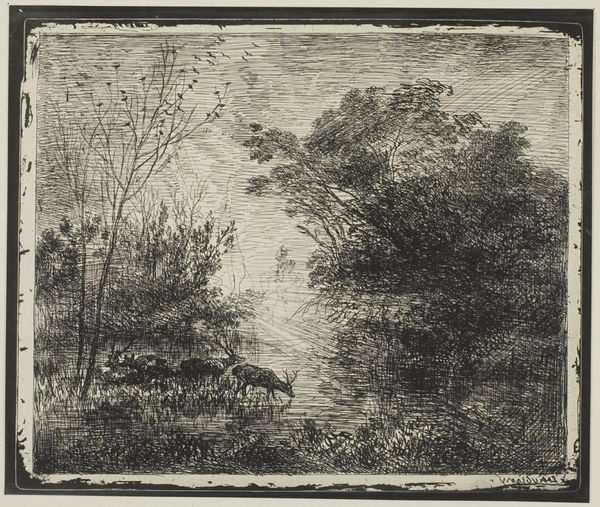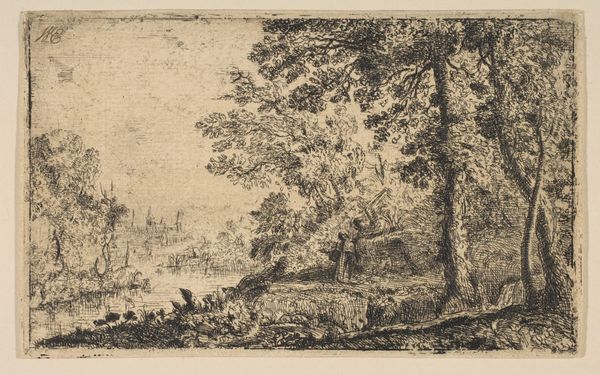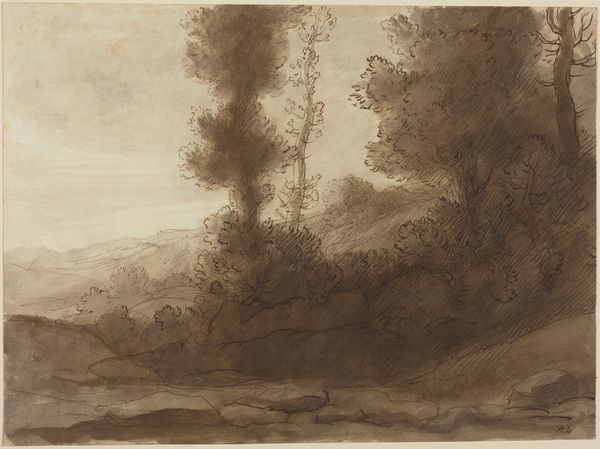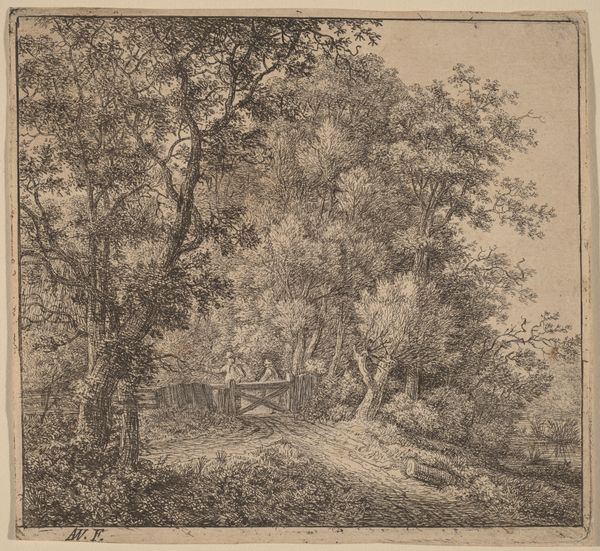
Dimensions: 272 × 343 mm (image); 303 × 365 mm (sheet)
Copyright: Public Domain
Curator: Today, we're looking at Camille Corot's "Souvenir of Ostia," an etching from 1855, currently residing here at the Art Institute of Chicago. Editor: My initial reaction is the density. The thick layering of lines almost overwhelms the landscape, creating this brooding, intense atmosphere despite the seemingly tranquil subject matter. Curator: Indeed, the etching process itself – the biting of the acid, the layering of lines – becomes a key component of the work's meaning. Consider the labour involved, the repetitive gestures needed to create such a rich texture. It elevates what might seem a simple souvenir into a statement about artistic process itself. Editor: And think about the "souvenir" aspect. Ostia, at the time, carried the weight of Roman imperial history, a site loaded with colonial narratives. Corot is not just depicting a landscape but engaging with this historical and political baggage through his chosen location. The density, that brooding atmosphere I mentioned, could even be a reflection on that historical weight. Curator: Precisely. His use of etching as a reproducible medium allowed this vision of Ostia, and its loaded history, to circulate more widely. The economics of printmaking were transforming art consumption and distribution, bringing art to a wider, though still largely elite, audience. Editor: This piece really bridges the gap between traditional landscape and something more psychologically complex. Corot invites us to consider not just the place, but its layered meanings and how artistic techniques shape our understanding of them within these intersectional lenses. Curator: Absolutely, it’s a powerful demonstration of how materials and production intertwine with social context. The choice of etching, its inherent properties, combined with Corot's labor, allows him to mediate romantic nostalgia and the commodification of travel and history. Editor: Ultimately, "Souvenir of Ostia" shows that landscapes aren't just passive scenes; they are contested spaces, and their artistic renderings are equally active interventions that contribute to collective consciousness. Curator: Thank you. That definitely helps to further illuminate Corot’s meticulous, transformative use of such material.
Comments
No comments
Be the first to comment and join the conversation on the ultimate creative platform.
